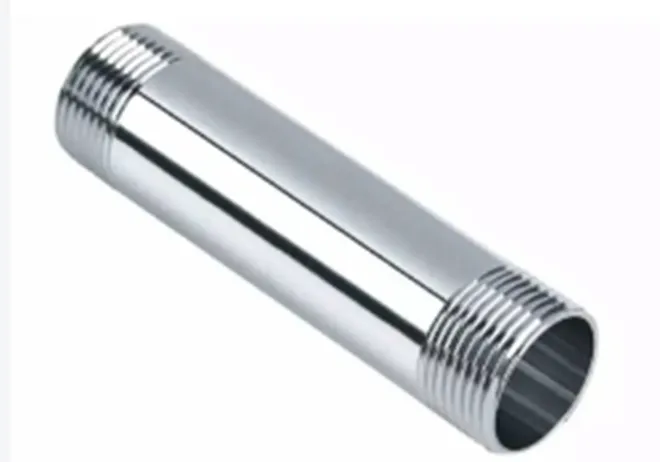-
Cangzhou Yulong Steel Co., Ltd.
-
Phone:
+86 13303177267 -
Email:
admin@ylsteelfittings.com
- English
- Arabic
- Italian
- Spanish
- Portuguese
- German
- kazakh
- Persian
- Greek
- French
- Russian
- Polish
- Thai
- Indonesian
- Vietnamese
- Zulu
- Korean
- Uzbek
- Hindi
- Serbian
- Malay
- Ukrainian
- Gujarati
- Haitian Creole
- hausa
- hawaiian
- Hebrew
- Miao
- Hungarian
- Icelandic
- igbo
- irish
- Japanese
- Javanese
- Kannada
- Khmer
- Rwandese
- Afrikaans
- Albanian
- Amharic
- Armenian
- Azerbaijani
- Basque
- Belarusian
- Bengali
- Bosnian
- Bulgarian
- Catalan
- Cebuano
- China
- China (Taiwan)
- Corsican
- Croatian
- Czech
- Danish
- Esperanto
- Estonian
- Finnish
- Frisian
- Galician
- Georgian
- Kurdish
- Kyrgyz
- Lao
- Latin
- Latvian
- Lithuanian
- Luxembourgish
- Macedonian
- Malgashi
- Malayalam
- Maltese
- Maori
- Marathi
- Mongolian
- Myanmar
- Nepali
- Norwegian
- Norwegian
- Occitan
- Pashto
- Dutch
- Punjabi
- Romanian
- Samoan
- Scottish Gaelic
- Sesotho
- Shona
- Sindhi
- Sinhala
- Slovak
- Slovenian
- Somali
- Sundanese
- Swahili
- Swedish
- Tagalog
- Tajik
- Tamil
- Tatar
- Telugu
- Turkish
- Turkmen
- Urdu
- Uighur
- Welsh
- Bantu
- Yiddish
- Yoruba

Nov . 15, 2024 05:41 Back to list
astm a 106 gr b specification
Understanding ASTM A106 Grade B Specification
The ASTM A106 Grade B specification is a crucial standard in the realm of high-temperature and high-pressure applications in the oil and gas, petrochemical, and power generation industries. Established by ASTM International, this specification outlines requirements for seamless carbon steel pipe primarily used in the transportation of fluids and gases at elevated temperatures. This article explores the key features, applications, and significance of ASTM A106 Grade B.
Material Composition
ASTM A106 Grade B is primarily made from carbon steel, with chemical composition requirements ensuring optimal performance under stressful conditions. The main elements that characterize Grade B include a maximum carbon content of 0.26%, along with manganese, phosphorus, and sulfur as additional components. The controlled levels of these elements enhance the material's mechanical properties, ensuring it can withstand harsh environments without succumbing to failure.
Mechanical Properties
One of the hallmarks of ASTM A106 Grade B is its impressive mechanical properties. The standard specifies a minimum yield strength of 35,000 psi (241 MPa) and a tensile strength ranging between 60,000 to 80,000 psi (414 to 552 MPa). Additionally, the elongation in 8 inches should be at least 20%, allowing for some degree of deformation without breaking under pressure. Such properties make it suitable for high-stress applications where failure is not an option.
Manufacturing Process
astm a 106 gr b specification

The manufacturing of ASTM A106 Grade B pipes involves a seamless process. This means the pipes are formed without any welds, which is crucial for applications where strength and durability are paramount. The seamless manufacturing ensures that the pipes have uniform mechanical properties, making them ideal for transporting highly pressurized fluids or gases. Moreover, the pipe undergoes rigorous testing to verify its adherence to the specification before it is delivered to end-users.
Applications
The versatility of ASTM A106 Grade B makes it a go-to choice for a variety of industries. It is extensively used in the oil and gas industry for pipeline projects, particularly for transporting natural gas and crude oil. In the petrochemical sector, it serves as a critical component in refineries, where it is used to handle high-temperature steam and chemical processes. The power generation industry also utilizes this grade for piping systems that require the handling of steam at high pressures.
Code Compliance and Standards
Adherence to the ASTM A106 Grade B specification is not just a matter of performance; it also ensures compliance with various international codes and regulations concerning safety and environmental standards. Organizations that rely on A106 Grade B materials are thereby assured that the products they are using meet stringent quality and safety requirements, reducing the risk of leaks and failures in critical systems.
Conclusion
In summary, ASTM A106 Grade B specification plays an essential role in the supply chain of industries that operate under high-pressure and high-temperature conditions. Its robust chemical and mechanical properties, combined with a seamless manufacturing process, make it suitable for various demanding applications. By complying with this specification, manufacturers and operators can ensure the reliability and safety of their piping systems, ultimately leading to improved operational efficiency and reduced downtime. The importance of ASTM A106 Grade B cannot be overstated, as it remains a cornerstone of industrial materials in sectors that fuel modern civilization.
Latest news
-
ANSI 150P SS304 SO FLANGE
NewsFeb.14,2025
-
ASTM A333GR6 STEEL PIPE
NewsJan.20,2025
-
ANSI B16.5 WELDING NECK FLANGE
NewsJan.15,2026
-
ANSI B16.5 SLIP-ON FLANGE
NewsApr.19,2024
-
SABS 1123 FLANGE
NewsJan.15,2025
-
DIN86044 PLATE FLANGE
NewsApr.19,2024
-
DIN2527 BLIND FLANGE
NewsApr.12,2024
-
JIS B2311 Butt-Welding Fittings LR/SR 45°/90° /180°Seamless/Weld
NewsApr.23,2024











